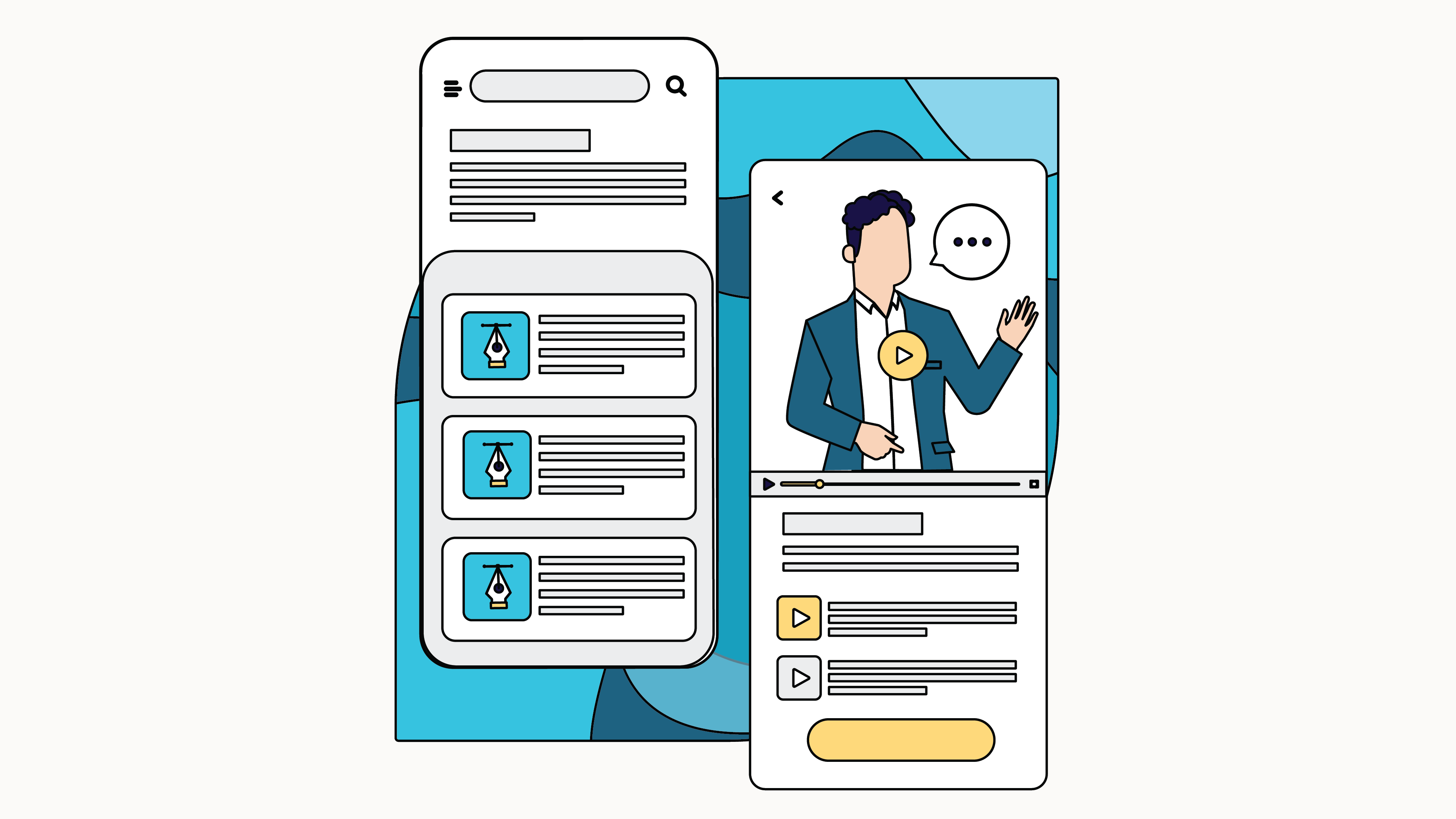E-learning is a significant advantage for businesses. It is an effective way to broaden your knowledge or even to retrain. In their beginnings, the MOOC were poorly distinguishable from elearning. They have evolved a lot, and the two are now quite distinct. Now, MOOCs are considered to be a learning method in their own right, with its advantages and disadvantages. What sets them apart from e-learning?
Different targets
E-learning
The elearning is a distance learning course in its own right. According to the definition made by the European Union, it consists of provide more quality learning through new technologies, the Internet and multimedia. It makes resources and some services more accessible for learners. This makes remote collaboration and communication between instructors and trainers easier. E-learning is qualified as “closed” since the courses offered are only reserved for people who have previously registered. with the creating organization.
Generally, this type of online training is carried out via LMS platforms. Learners' paths, for their part, may or may not be diplomas. Teachers are sometimes responsible for providing courses and communicating with each learner. However, e-learning, in its restricted framework, is aimed at an audience that really needs online training, on a well-defined course or module. Learners can self-study freely and do not necessarily benefit from the assistance of a tutor. Despite everything, the creating organization reserves a space for them to interact to ensure exchanges.
The MOOCs
MOOCs, or Massive Open Online Courses, for their part, are considered to be a branch of e-learning, but they are beginning to differentiate themselves more and more from them. This type of online training is a kind of association between open courses and the basic principles of e-learning. It does not, in fact, require registration within the creating organization by being open to all. As for the course flow, it uses tools similar to those that exist in the closed framework of e-learning. For the most part, MOOCs are free, but there are more and more trainers and training organizations offering paid models, including school leaving certificates.
A different dimension
MOOCs and e-learning are also distinguished by their size. The first targets all learners who want to enroll in online training, regardless of the city where they live. The MOOC can thus reach tens of thousands of people. scattered all over the world. E-learning, for its part, does not involve as many people. It is often set up by a company, with its own e-learning strategy, and reserved for its employees. This distance training can in fact be carried out in a group or individually, depending on the needs of each one.
Its difference with the MOOC also lies in learning methods, pedagogy and supervision. This type of training is mainly based on social learning. Forums are available to promote exchanges between learners. Stephen Downes, one of the creators of the MOOC, explained that he especially has a event dimension. So it is limited in time. If e-learning is a course that must be followed more or less over the medium term, The MOOC, on the other hand, is short-term. On the other hand, it can happen several times a year, depending on the organizers' schedules.
In any case, the appearance of this type of training is the result of digitalization, new technologies and the rapid learning needs of professionals in many fields.
Different resources
MOOCs are courses for thousands of people: simplicity is the order of the day. We will mainly find PDF or PowerPoint supports, videos and videoconferences. The variety of learning devices is relatively limited. Sometimes, participants also benefit from other tools, such as the automatic correction of exercises. However, The educational resources of a MOOC may vary from one trainer to another. In fact, everything depends on your budget, as the MOOCs offering the most resources are generally chargeable.
As far as e-learning is concerned, resources are available either in the directory or in the library. Everyone can use them as they see fit. Some trainers even offer Real-time courses if they consider it necessary to facilitate the comprehension of a module. For the evaluation of learners, quizzes and various exercises are offered. They also generally have a profile on the LMS platform, which allows for simpler and very personalized follow-up. E-learning can thus have an impact on business productivity.
MOOC and e-learning, how successful?
MOOCs and e-learning don't have the same popularity. A large number of learners prefer e-learning, and companies are more likely to choose this method for the vocational training of their employees. However, MOOCs also have their followers, especially among people who do not have access to or are not satisfied with corporate training. Be that as it may, Learners and businesses choose their online training based in particular on the quality of the resources proposed, the pedagogy adopted, possibly the opinion of their peers. MOOCs, like e-learning systems, must therefore offer a practical system with quality content., able to meet the needs of learners.
MOOCs and e-learning platforms therefore do not have neither the same targets, nor the same dimensions, nor the same resources. Or at least not quite. Before choosing one or the other, it is recommended that you take stock of your training needs and look for the most appropriate solution. The success of each of these methods, while unequal, proves that they both offer interesting possibilities that can be studied when looking for the most suitable training. E-learning has its advantages, but MOOCs too!




